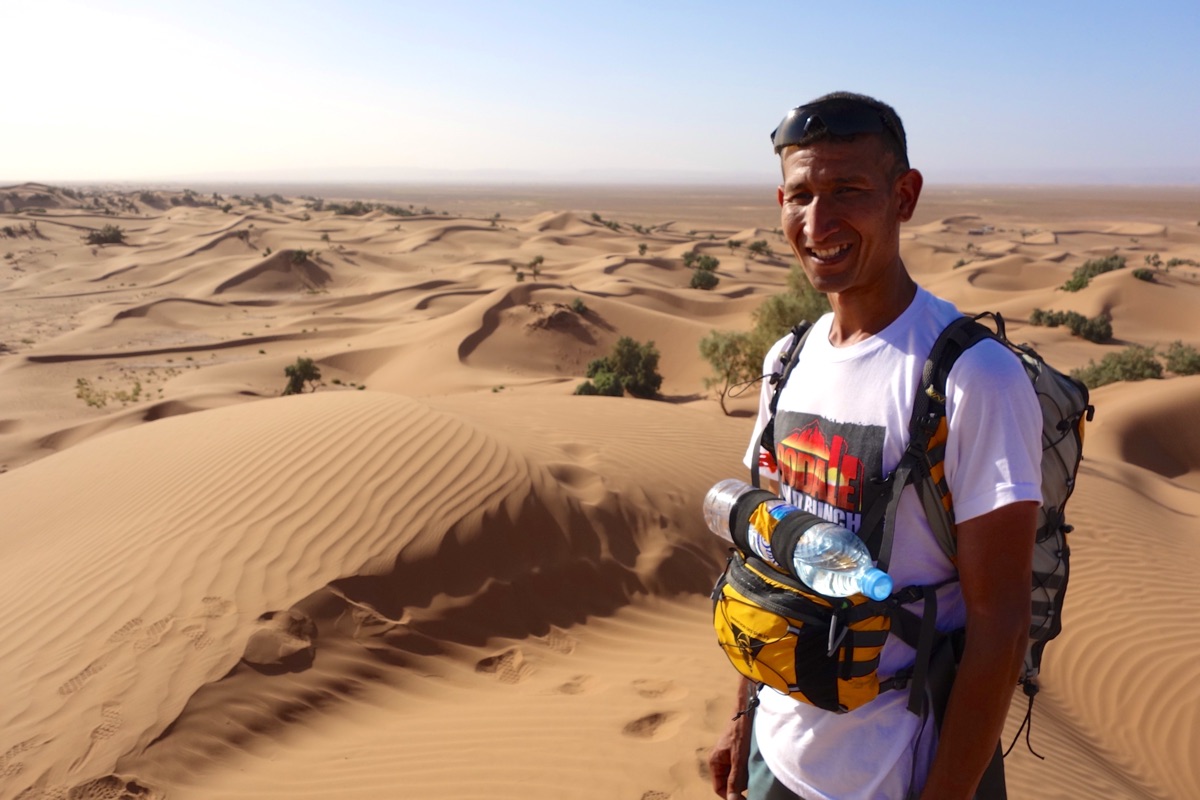
Like this article? Get your copy of the book “Where the Road Ends!”
Welcome to this month’s edition of “Where the Road Ends: A Guide to Trail Running,” where we discuss the basics of trail running hydration. “Where the Road Ends” is the name of both this column and the book Meghan Hicks and Bryon Powell of iRunFar published in 2016. The book Where the Road Ends: A Guide to Trail Running is a how-to guide for trail running. We worked with publisher Human Kinetics to develop a book offering the information anyone needs to get started, stay safe, and feel inspired with their trail running. The book Where the Road Ends teaches you how to negotiate technical trails, read a map, build your own training plan, understand the basics of what to drink and eat when you run, and so much more.
This column aims to do the same by publishing sections from the book as well as encouraging conversation in the comments section of each article. We want you to feel inspired and confident as you start trail running as well as connected to iRunFar’s community of off-road runners!
In this article, we excerpt from Chapter 6 to talk about the basics of trail running hydration.
Why is Trail Running Hydration Important?
Almost every part of your body needs water to operate, and water makes up well over half of your body’s weight. Your blood needs sufficient water to transmit oxygen and nutrients around the body. Your muscles need it to perform their continued contractions. Your kidneys require water to excrete waste products from your body. And on it goes.
When you run, you lose water through sweat, respiration, and waste elimination. You should replace whatever water you lose. But you don’t always need to do that during your trail run, so much as over the course of a day. In this way, we like to think of trail running hydration as all the hydration you do–on and off the trail.
Trail Running Hydration and Drinking to Thirst
Magda Boulet is an Olympic marathoner who converted to competitive trail running in 2013. She works in research at Gu Energy and has a master’s in exercise physiology. Magda also says that you need to maintain proper hydration on a daily basis, not just when you’re running. All-day hydration is where it’s at, says Boulet: “A key aspect of maximizing performance is arriving at the start of a workout or race well hydrated. Many, if not most, athletes cannot consume enough fluid during exercise to match rates of loss, which has been documented by many studies. Therefore, prehydration before starting exercise can help ensure that athletes start the event or exercise bout in a hydrated state and can improve performance.”
How can you do this? Drink when you’re thirsty, and stop when you aren’t anymore—in life, when running, anytime. It’s that simple.
The human body has thirst cues, such as the feelings of parched lips, a dry mouth, or a raspy throat. These are responses to water loss. Scientists believe that people who listen to their thirst cues by drinking when they feel thirsty and stopping when those feelings disappear, during daily life and exercise, hydrate adequately.
As recently as a decade ago, doctors were categorically recommending that we drink eight 8-ounce (240 ml) glasses of water per day, whatever our body size, our daily exertion, or the weather. Dr. Timothy Noakes, author of Waterlogged: The Serious Problem of Overhydration in Endurance Sports, points to another culturally pervasive issue, at least in our running culture–the historical recommendation to drink to excess during sports be it through water or sports drinks. But overhydration can be a serious medical issue. In response, Noakes began promoting the drink-to-thirst principle as a way to encourage people to drink the proper amount of water in daily life and during exercise.

Stephanie Howe using a running vest to carry water during the 2014 Western States 100. Photo: iRunFar
When drinking to thirst, some runners find that they feel better when they sip small amounts frequently, whereas others like to guzzle at irregular intervals. The water you drink goes to your gastrointestinal tract, and it’s then transferred elsewhere in your body. The stomach has an average maximum processing capacity of about one liter of water per hour during aerobic exercise, an amount that will vary depending on how hard you’re running, the climate in which you’re exercising, and how much liquid and material containing calories is in your stomach. If you exceed that emptying ability, water will begin to pool in your stomach, which can lead to the sensations of bloating, sloshing, and even nausea. With practice, you will learn your body’s preferred rate of water consumption.
Test the drink-to-thirst concept to learn how it works for you. Spend a day following your thirst cues, including before, during, and after your trail run. Monitor the color of your urine throughout the day. If your urine is light yellow, you’re likely adequately hydrated. Any lighter- or any darker-colored urine could mean that you’re overhydrated or dehydrated, respectively. You may find that it takes a little while to identify your thirst cues because people in Western cultures often drink for purposes other than quenching thirst.
Staying Hydrated on the Run
Most of your trail runs won’t require hydration during the run. They will be short enough that you can rely on your body’s own water-storage capability. But there will come a time in your growing relationship with trail running that you’ll run long and far enough that you’ll want to drink water while you’re running. When this happens, there are two immediate questions, “How much water should I drink and how do I carry it?”
Have a look back at this article where we talked about ways to carry water via a handheld water bottle, running belt, or running vest. In terms of how much to drink, we return to Noakes’s adage: drink to thirst! Of course, we have to predict how much we’ll need so that we pack enough. We learned earlier in this article that the stomach can absorb on average a liter of water per hour, so use that as a general reference in packing your water supply. Once out there, stick to the plan of drinking to thirst. With trail running hydration, you are an experiment of one. Over time, how much water you pack for a run and when you drink will become as intuitive as the running motion itself.
One last thought, if you’re headed to a remote place or if it’s a hot day, carry at least some water, even if you don’t think you’ll need it. If the run takes you longer than you think or you take a wrong turn, you’ll be glad you have it!
Excerpted from Where the Road Ends: A Guide to Trail Running, by Meghan Hicks and Bryon Powell. Human Kinetics © 2016.
Call for Comments
- For those of you reading who have experience in trail running, can you share something you wish you new about hydration when you started?
- Do you have questions about the basics of trail running hydration? Leave a comment and we’ll do our best to answer them!

